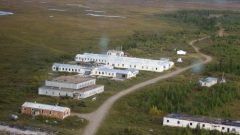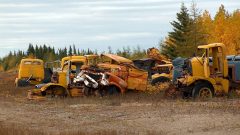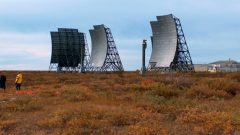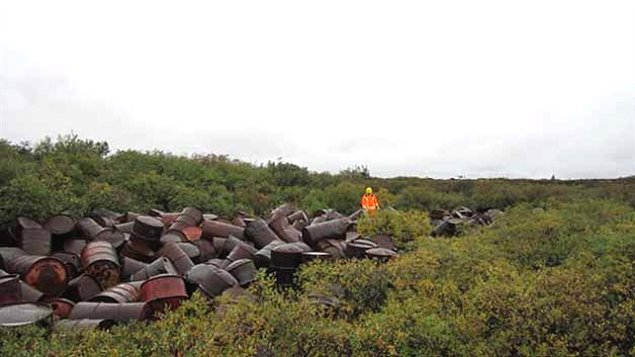The bombers never came.

One of the “Control Stations”. empty for decades and used occasionally by hunters for shelter (photo; Ontario Ministry of Natuial Resources)
Following the Second World War, tension built between the western allies and the Soviet Union and wary of the Soviet intentions, the US and Canada embarked upon a massive radar detection screen. For decades at various sites, military personnel in remote locations would man radar screens day and night, seven days a week, nervously watching for suspicious blips.
But the threat never materialised and eventually almost all the stations were abandoned.
In a multi-year, multi-million dollar project, work continues to clean up the pollution and junk left over from abandoned radar sites at remote Canadian locations.

Vehicles, some broken and some in operable condition, were simply left behind. (Photo Ministry of Natural Resoureces)
The latest effort is near Fort Severn close to the western shore of Hudson Bay, as the province of Ontario cleans up its MID-Canada Line sites.
When the sites were abandoned in the mid-1960’s, they were simply left almost as is. Tanks and barrels of fuel and other hazardous waste, vehicles, radar antennas and dishes, and buildings were left behind as it was simply too expensive to attempt to bring all the material out. Also in these remote locations, the feeling at the time was one of “out of sight, out of mind.
There were 98 radar installations across Canada with 16 sites in Ontario. Cost for cleanup in Ontario, now in the fifth year of a six year programme, are expected to be roughtly $100 million. The federal government had transferred the radar site land to the province when the sites were closed.
A spokesman for the Ontario clean-up says there has been a great deal of collaboration with First Nations groups adding that 70-75% of the work force consists of First Nations personnel..
In the 1950’s the Cold War was at its height.North American defence against the possible attack of Soviet bombers resulted in three separate lines of radar stations.

Radar dishes were spread across the land at about 50km apart and were mostly unmanned. these too will be dismantled and removed (photo Ministry of Natural Resources)
The “Pinetree” line close to the US Canada border but stretching in to Canada was built first, but even before it became operational, it was deemed ineffective as it used a “pulse” system which could be overcome and it’s location meant Soviet bombers would already be too close to the US to effect an intercept.
The Mid-Canada Line (MCL) was then built with a vastly improved radar technology. As it’s name suggests, it was much further north, roughly along the 55th parallel, which would give more time to react to a bomber threat.
It was declared operational on January 1, 1958 and incorporated into the new formed NORAD (North American Aerospace Defence Command). It consisted of a number of main “sector control stations” connected to several smaller unmanned Doppler detection sites, each located about 50km apart.
However, like its predecessor, questions about its usefulness also arose early in its operational life, especially as the bomber threat was reduced and replaced by the threat of ICBMs (inter-continental ballistic missiles) which would fly much higher and much faster). Thus the line was abandoned in the spring 1965’s as maintenance costs were deemed to be more than the line’s usefulness merited.
It was in turn replaced by the DEW line, (distant early warning) radar sites in the high arctic. Given the questions about the Mid-Canada line, construction on this high arctic line began even before the MCL became operational.
Most DEW stations were abandoned in the late 1980’s with some upgraded with new technology and designated as the North Warning System with an official changeover in 1993.







For reasons beyond our control, and for an undetermined period of time, our comment section is now closed. However, our social networks remain open to your contributions.